This recipe will be your new favorite if you want the best buttery, soft vegan shortbread cookies. They are utterly delicious. You will need a handful of ingredients and a few simple steps to enjoy your first batch in 20 minutes!
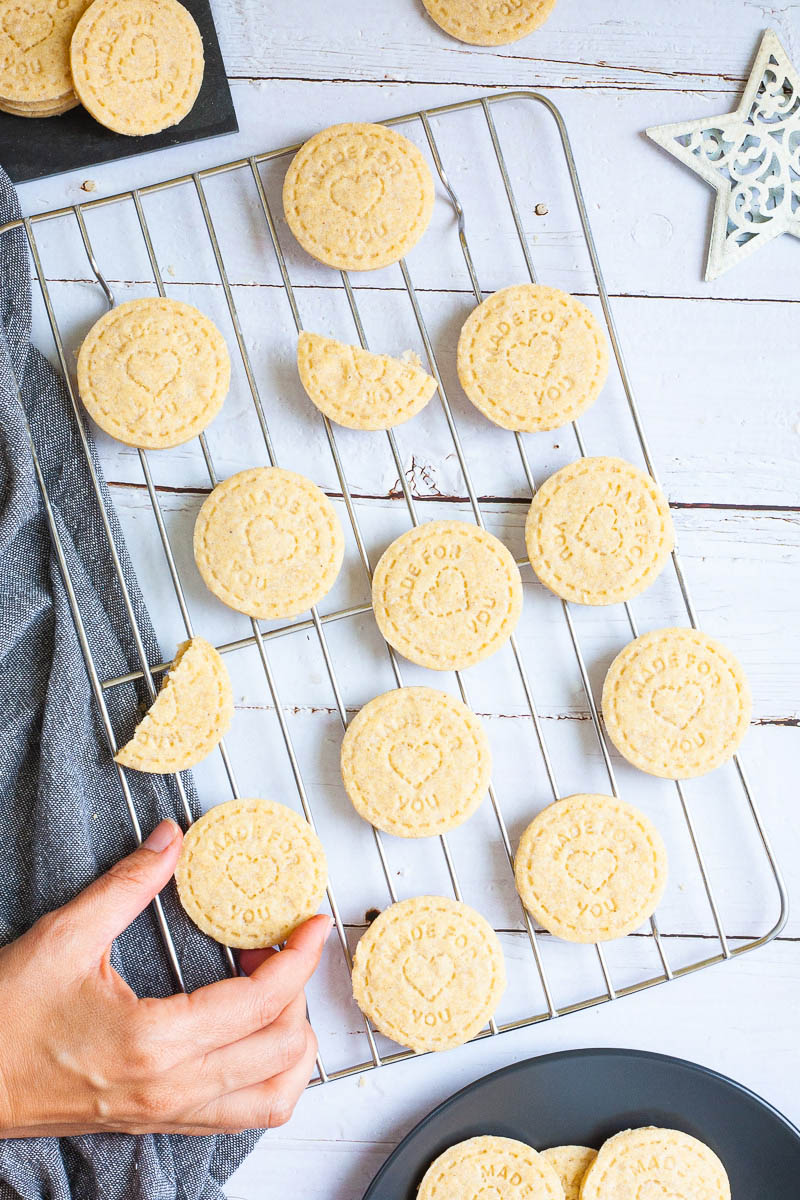
Want to save this post?
Enter your email below and get it sent straight to your inbox. Plus, I’ll send you budget recipes and money-saving tips every week!
If you want more vegan cookie recipes, try our snowball cookies, crescent cookies, coconut cookies, thumbprint cookies, or lemon cookies.
What to expect
If you try this recipe, you will get soft, melt-in-your-mouth vegan shortbread cookies with a hint of vanilla flavor. None of my family members or friends could tell they were different from the classic recipes with all-purpose flour and dairy butter. They even said the taste was more buttery and light.
Do you need only a handful of steps to make them? Yes, you do. Grab a food processor. Mix six ingredients for two minutes. Roll, cut, and bake. The dough is easy to work with, not sticky, and freezable.
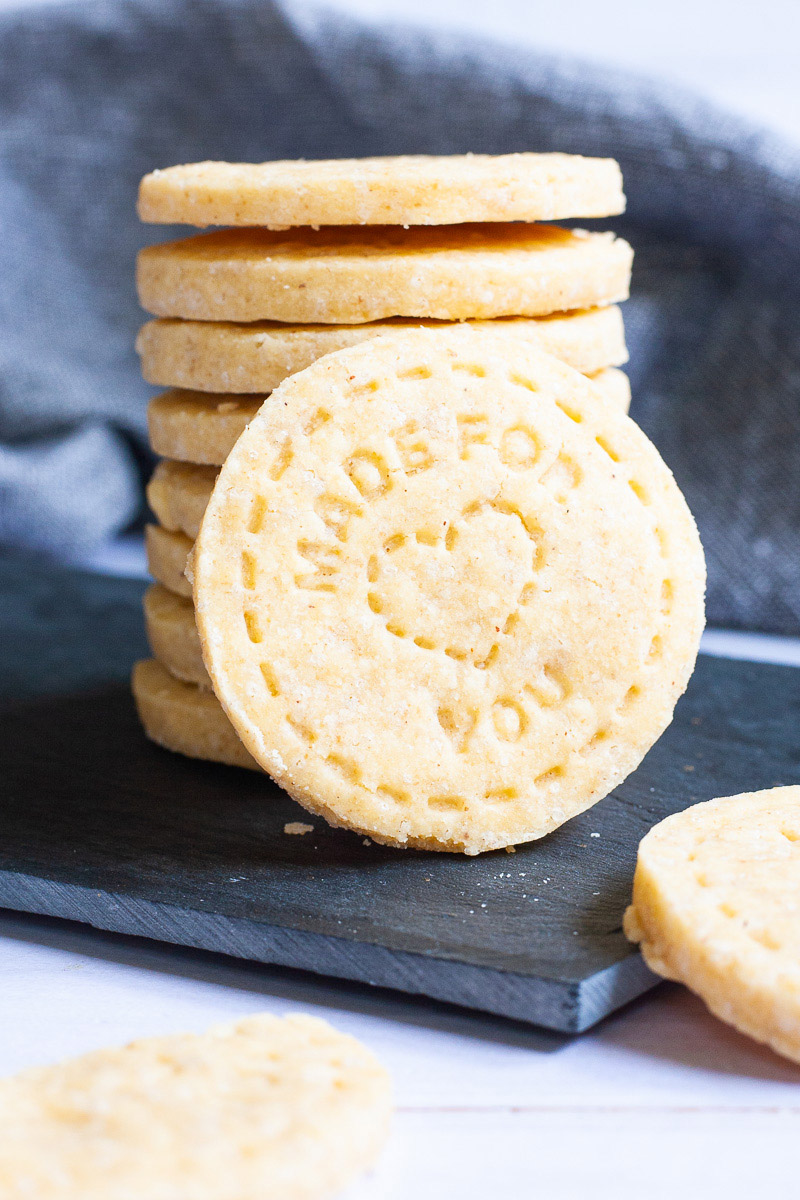
Ingredients
Are shortbread cookies vegan? No, not by default. But you also can keep a few ingredients the same. We like working with gluten-free flour, as all-purpose flour doesn’t have to be a go-to flour for everything. We choose these ingredients to get perfect, light, and crunchy vegan shortbread cookies.
- White rice flour
- Buckwheat flour → I haven’t tested this recipe with all-purpose flour.
- Cornstarch → You can substitute it with tapioca or other starches.
- Cane sugar → You can use other dry sugars like coconut sugar, brown sugar, or white sugar. We haven’t tested this recipe with a liquid sweetener like maple syrup.
- Vegan butter → Like Earth Balance butter sticks.
- Vanilla extract
- Pinch of salt
🛒 You can find detailed measurements for all ingredients in the printable version of the recipe card at the bottom of this post.
Instructions
I promised simple and it really is. I usually grab my food processor to mix the butter with the dry ingredients. I do it for almost all of my gluten-free cookie recipes. So what do you need to do here?
- Add all dry and wet ingredients (white rice flour, buckwheat flour, starch, sugar, vanilla extract, salt, and vegan butter) to a food processor and mix until it reaches a crumble texture.

- Take a large bowl and add the dough from the food processor. Knead it with your hands for two minutes until you can form a large ball. If the ball is dry and crumbles after 2-3 minutes, add 1-3 teaspoons of water, one teaspoon at a time. The dough should not stick to your fingers.
- Take your rolling mat and lightly flour it. Roll the cookie dough around ¼-½-inches.
- Choose your favorite cookie cutter and cut out the shapes you want.
- Bake your shortbread cookies on parchment paper for 10-12 minutes. Baking time may depend on your oven, so check them around 8-10 minutes.
- Chill them on a cooling rack before serving!
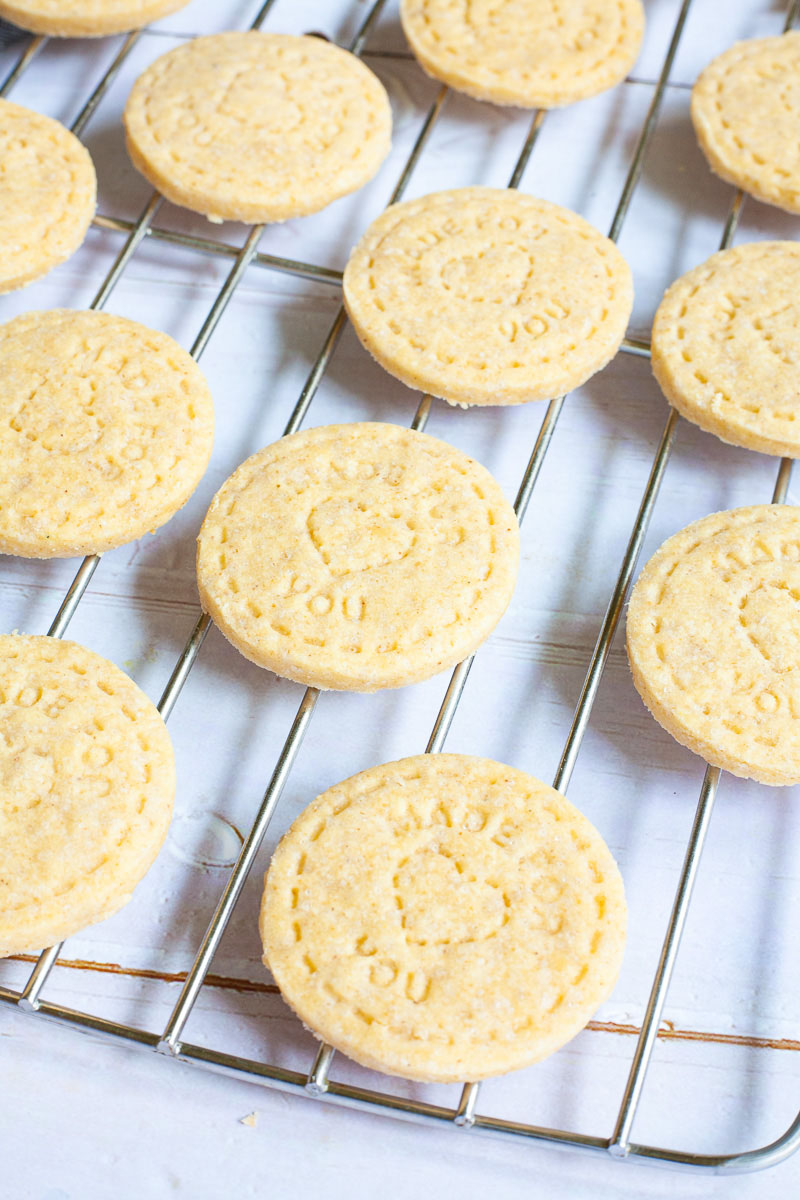
Variations
Toppings and add-ins
While classic shortbread cookies are usually round-shaped or little finger cookies without any toppings, but you can still get creative with them.
- Drizzle them with a glaze and drop some slivered or sliced almonds on top.
- Dust them with powdered sugar.
- Spread jam on top, or make vegan shortbread cookie sandwiches by sticking two cookies together. Think of strawberry, raspberry, blueberry jam, or apricot.
- Add chocolate chips to the dough and bake.
- Drizzle vegan caramel on them.
Themes
You can make various shaped shortbread cookies, but you can also use a cookie stamp to make these cute captions like in our photos.
- Christmas – snowflakes*, gingerbread man and snowman* or traditional* like angels, bells, and mistletoe
- Halloween* – like pumpkin, haunted house, owl, witch, or ghost
- Easter*– like bunnies, eggs, and chicken, and decorate them with colorful sprinkles.
- Letter stamp*– to write your messages
- Party – dinosaur*, cats*, or for baby shower*
- Engraved rolling pin – with cats*, Christmas*, or floral*
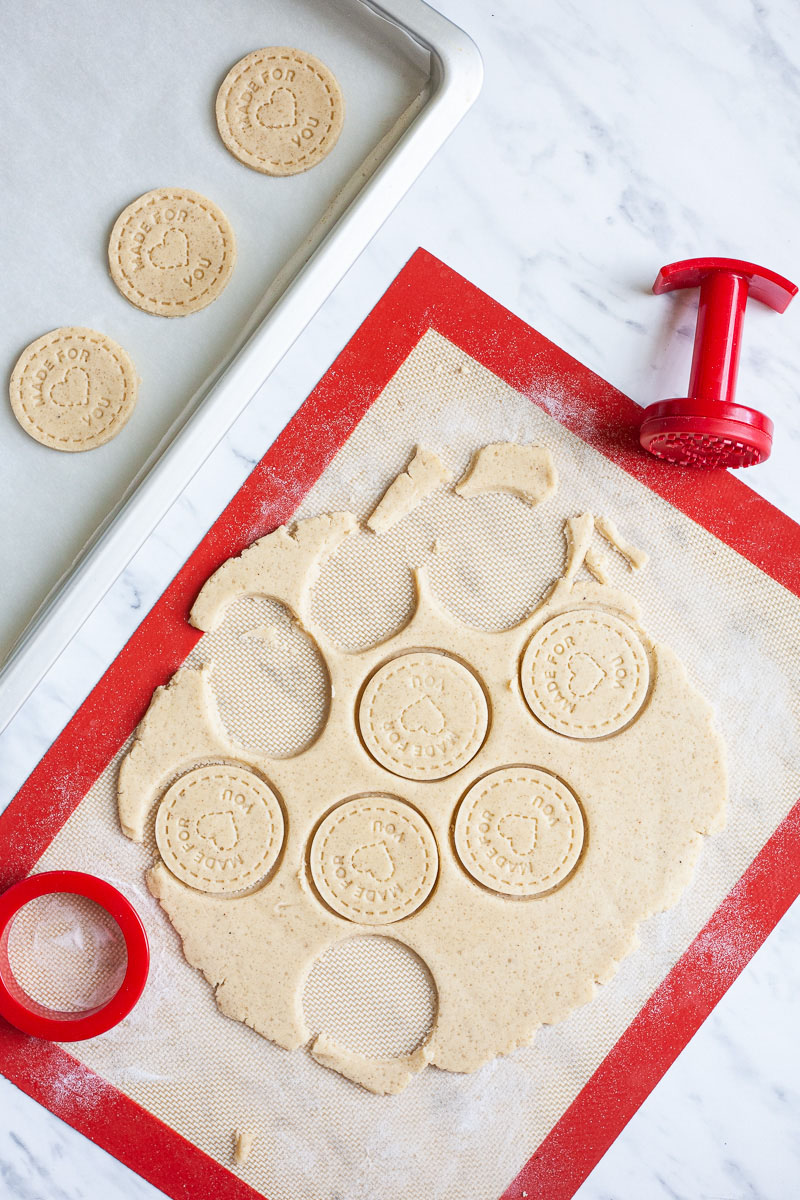
Top tips
- Measure it with a scale – I always measure the ingredients on a scale and convert the recipe back to cups. I use King Arthur’s Weight Chart to ensure the cup measurements align with the grams. If you want to make perfect cookies, use a scale.
- Flour your surface – White rice flour is my go-to because it has a grainy consistency. When rolling the dough, it feels like rolling them on small balls. It makes the job so easy.
- Use saran wrap or cling foil – If I have to roll out any dough, whether a cookie, pie crust, or pizza crust, I ALWAYS use saran wrap on the top, so the dough will not stick to the rolling pin. If you do that, you can save so much time and hassle. You also don’t need to flour the top of the dough and risk rolling too much flour into it.
- Parchment paper instead of silicone mats – I recommend using parchment paper instead of silicone baking mats, especially if you make multiple batches. Hot cookies are delicate. If you try to transfer them, they may break or crumble. Using parchment paper, you can move the cookies from the cookie sheet or baking tray to a wire rack without touching them.
- Place them close – You can place them relatively close to each other as there is no baking powder, baking soda, or any other type of leavening. Which means they will not rise significantly.
- When are they ready? – If they start to brown on the edges, you are too late. Since we used white rice flour, they will not be golden brown unless you overbake them.
FAQs and substitutions
Can you make it ahead of time?
Yes, these yummy vegan shortbread cookies last for a long time. That is why they are perfect as edible Christmas gifts. Even if you don’t cover them, you can store them at room temperature for 1-2 days without any problems. They will last for up to two weeks in an airtight container.
Can the cookie dough be frozen?
Yes, you can store both the cookie dough and the baked cookies in the freezer. Thaw it in the fridge overnight or at room temperature for at least 1 hour before rolling.
Can I substitute any flour or starch?
I have only tested it with cornstarch and tapioca starch and saw no difference. Read our tapioca flour substitutes article for more starch options. As for the flour, you can use oat flour or millet flour instead of buckwheat, although the flour combination in the recipe card is the one I recommend the most.
Can you replace butter with oil in shortbread?
The answer is yes. Since vegan margarine is usually coconut oil-based, using coconut oil will make a slight difference. You end up with flakier and more delicate cookies.
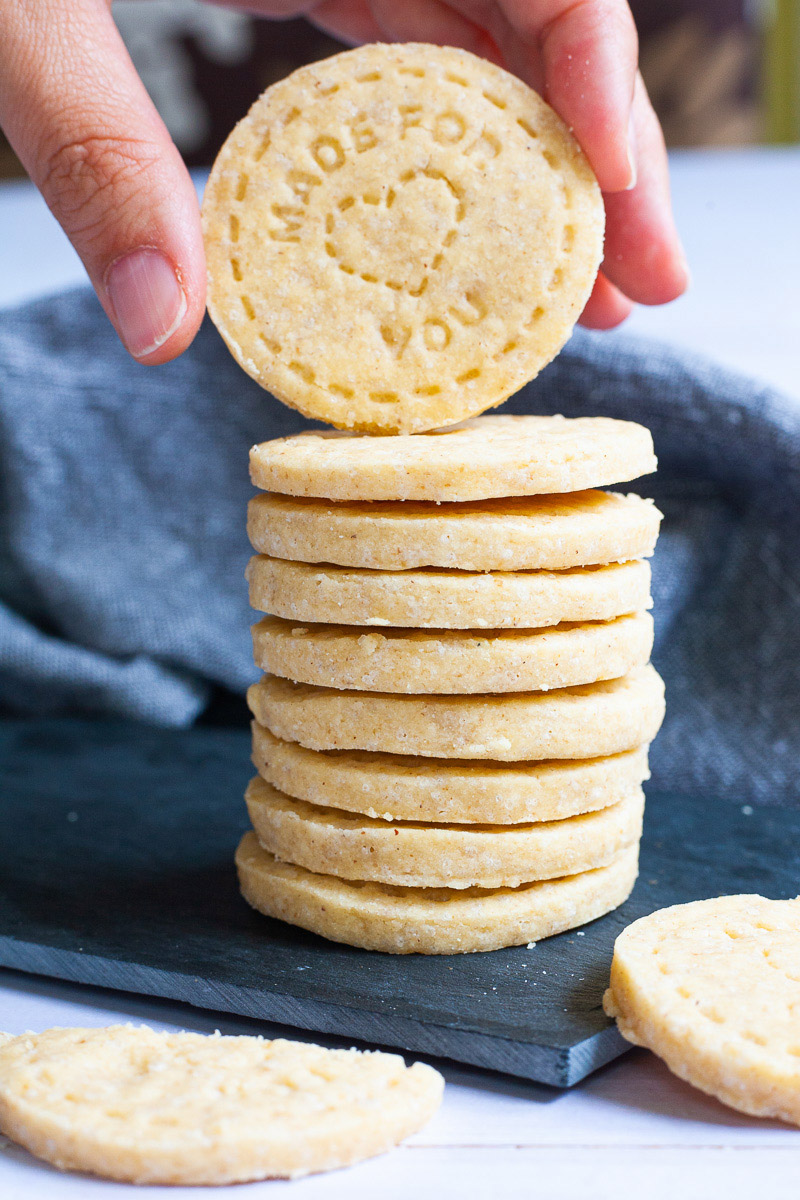
Allergen info
This Vegan Shortbread Cookies recipe is dairy-free and egg-free.
- Vegan – All suggested ingredients are supposed to be vegan.
- Nut-free – All ingredients are supposed to be nut-free, but always check the packaging before using any ingredient.
- WFPB-friendly (whole foods plant-based) – Vegan butter is not compliant since it has processed oil. We haven’t tested this recipe with nut butter.
- Gluten-free – All proposed ingredients are supposed to be gluten-free, but always check the packaging for cross-contamination info, especially for cornstarch and flour. We haven’t tested it with Bob’s Red Mill or other gluten-free flour blend.
- Soy-free – Companies frequently use soy to make vegan butter. So select soy-free products. All other ingredients are supposed to be soy-free.
For more vegan dessert recipes, browse through our recipe collection or check out these delicious cookies:
THANK YOU so much for visiting our website. Please comment below if you have tried this recipe. We LOVE hearing from you! If you loved the recipe, please don’t forget to give us a ⭐⭐⭐⭐⭐ RATING. We appreciate all of our readers.
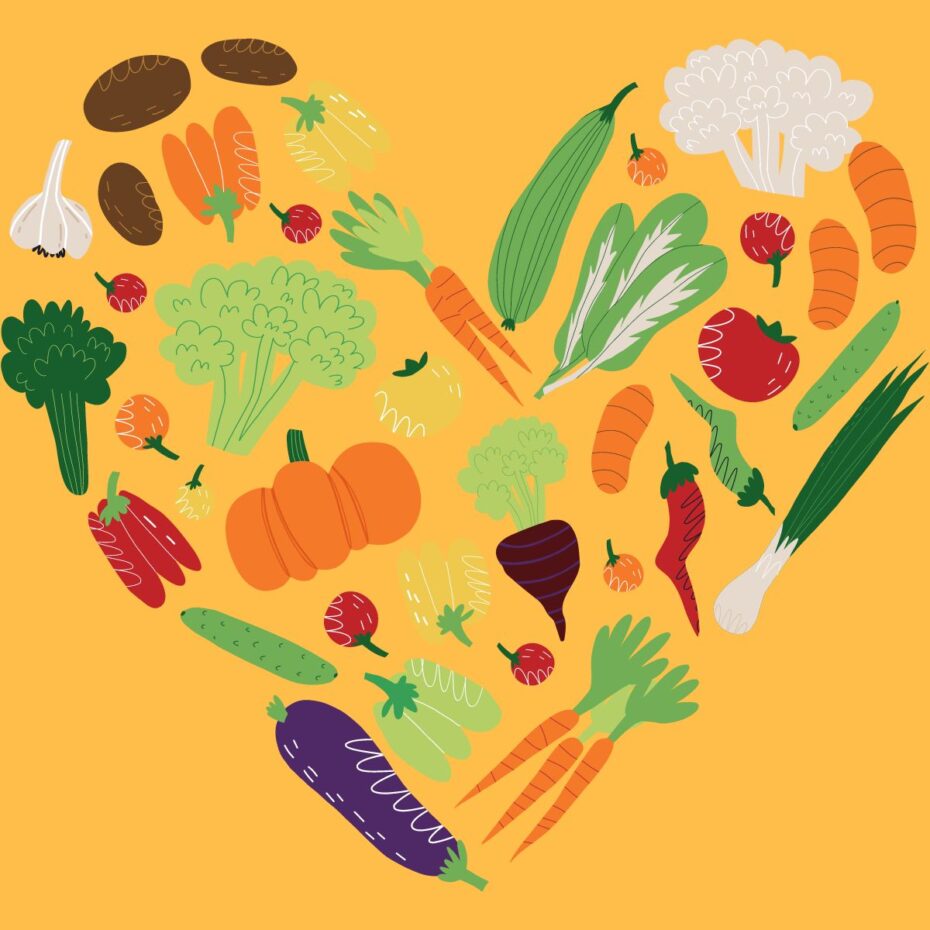
⇒ GET OUR FREE 7-DAY VEGAN MEAL PLAN E-BOOK NOW! OR CHECK OUT ALL VEGAN MEAL PLAN RECIPES! ⇐
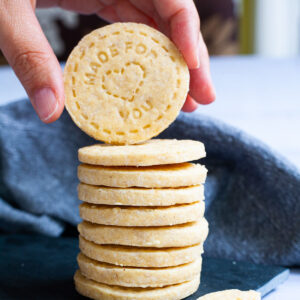
Vegan Shortbread Cookies (Gluten-free)
Ingredients
- 1 cup White rice flour
- ½ cup Buckwheat flour
- ½ cup Corn starch or tapioca starch and other substitutes
- ⅓ cup Cane sugar
- 5 oz Dairy-free butter
- 1 tsp Vanilla extract
- ¼ tsp Salt
- 1 Tbsp Water optional – see instructions
Instructions
- Preheat oven at 390 Fahrenheit (ca. 199 °C).
- Add all ingredients (rice flour, buckwheat flour, corn starch, sugar, butter, salt, and vanilla extract) to a food processor and pulse until you get a crumble texture.
- Take a large bowl and add the dough from the food processor. Knead it with your hands for two minutes until you can form a large ball. If the ball is dry and crumbles after 2-3 minutes, add 1-3 teaspoons of water, one teaspoon at a time. The dough should not stick to your fingers.
- Take your rolling mat and lightly flour it. Roll the cookie dough around ¼-½-inches.
- Choose your favorite cookie cutter and cut out the shapes you want.
- Bake your shortbread cookies on parchment paper for 10-12 minutes. Baking time may depend on your oven, so check them around 8-10 minutes. Chill them on a cooling rack before serving!
Notes
- Measure it with a scale – I always measure the ingredients on a scale and convert the recipe back to cups. I use King Arthur’s Weight Chart to ensure the cup measurements align with the grams. If you want to make perfect cookies, use a scale.
- Flour your surface – White rice flour is my go-to because it has a grainy consistency. When rolling the dough, it feels like rolling them on small balls. It makes the job so easy.
- Use saran wrap or cling foil – If I have to roll out any dough, whether a cookie, pie, or pizza crust, I ALWAYS use saran wrap on the top so the dough will not stick to the rolling pin. If you do that, you can save so much time and hassle. You also don’t need to flour the top of the dough and risk rolling too much flour into it.
- Parchment paper instead of silicone mats – I recommend using parchment paper instead of silicone baking mats, especially if you make multiple batches. Hot cookies are delicate. If you try to transfer them, they may break or crumble. Using parchment paper, you can move the cookies from the cookie sheet or baking tray to a wire rack without touching them.
- Place them close – You can place them relatively close to each other as there is no baking powder, baking soda, or any other type of leavening. Which means they will not rise significantly.
- When are they ready? – If they start to brown on the edges, you are too late. Since we used white rice flour, they will not be golden brown unless you overbake them.
Nutrition
UPDATED: This recipe was originally posted in October 2021. More info, tips, and details were added, and it was republished in October 2022.



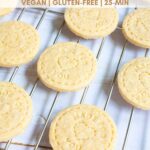

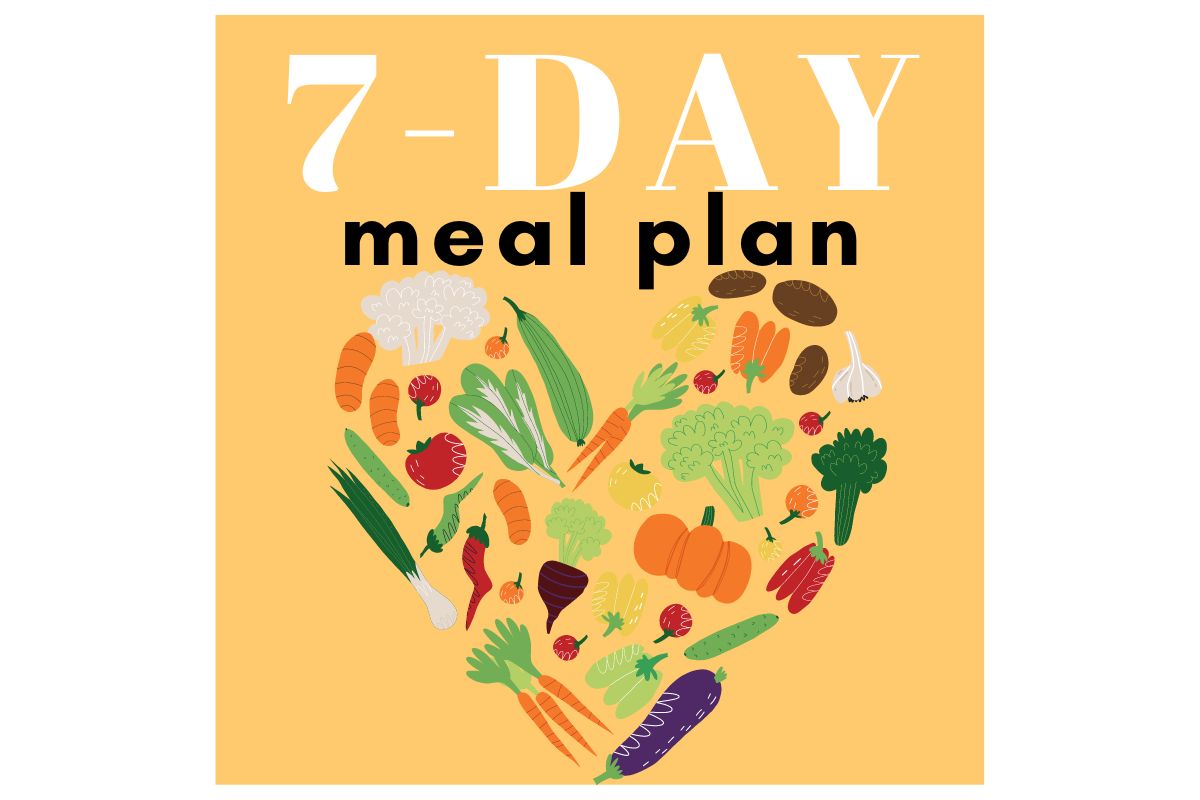
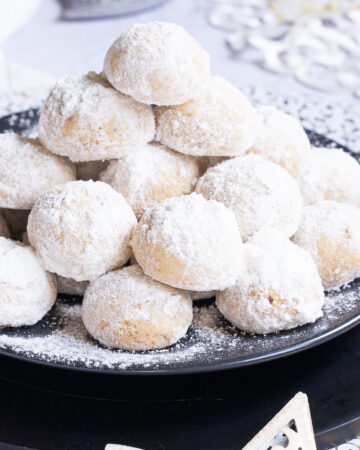
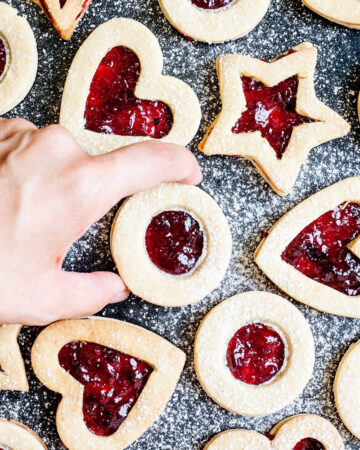
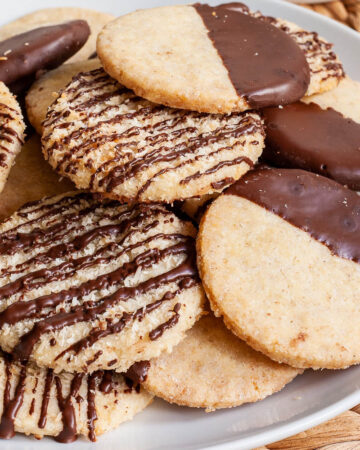
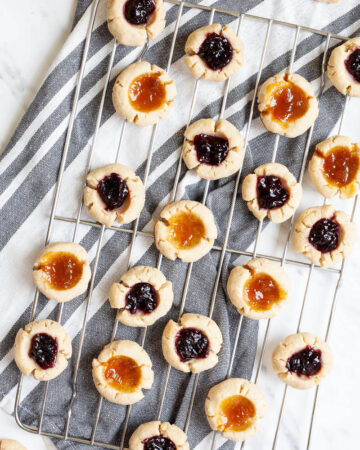
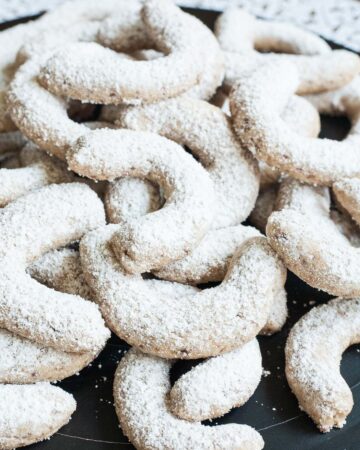
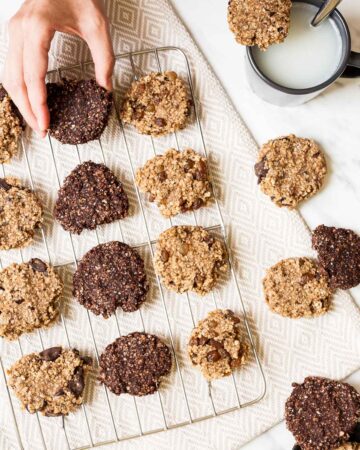
Debbie
Thanks for posting this recipe. They were certainly easy to make, and I got good feedback re: flavor, though they didn’t particularly knock my socks off. The texture was a bit gritty, which I’m attributing the the rice flour. I used Bob’s Red Mill and thought it could perhaps have been a little finer.
I love the cook mode switch so the screen doesn’t go dark – brilliant!
One comment, though: The pictured shortbread cookies simply cannot be those of this recipe, which uses buckwheat flour. Is there a type I should know about???
My Pure Plants
Hi Debbie, Thank you for trying our recipe. The pictured cookies are exactly the ones described in the recipe card. We use finely ground buckwheat flour from hulled buckwheat like Anthony’s. I did come across very gritty buckwheat flour before and the recipes I used that for didn’t come out right. So I make sure I buy the almost white-looking buckwheat flour and not the grey-ish one which is unhulled. You can see the difference in this buckwheat bread recipe, where the blogger took a photo of hulled and unhulled flour right next to each other for comparison.